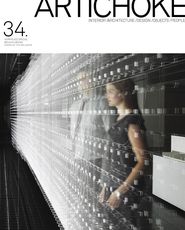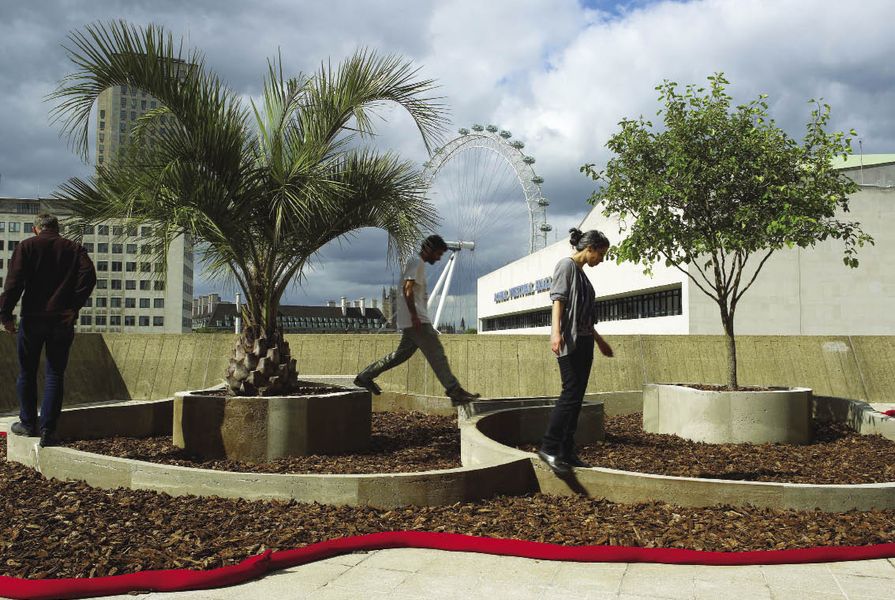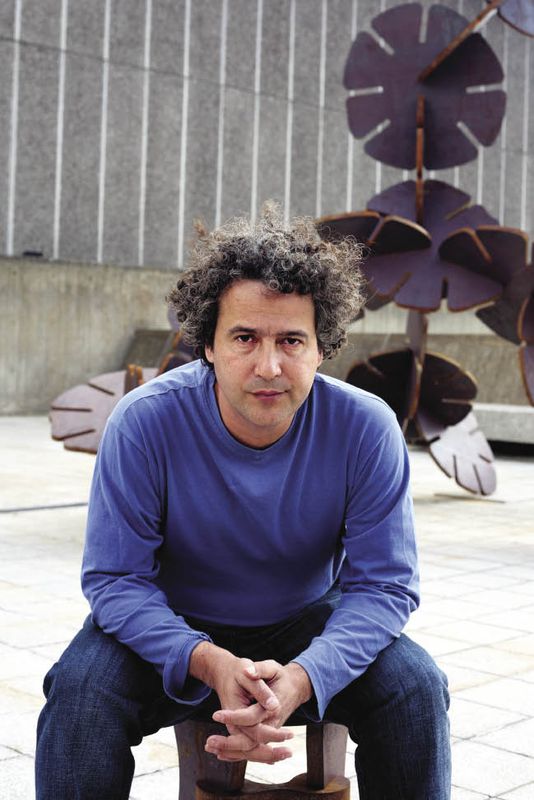Visitors balance on an undulating path.
Image: Steve White
“If you make an exhibition with a single sculpture in the middle of a big room, you focus all your attention on this work,” says the Brazilian sculptor Ernesto Neto in a catalogue interview for his current exhibition at London’s Hayward Gallery. “A decade ago I began to think that I should work with a variety of focal points. I decided that I want to make people a little dizzy so that when they think that the answer is here, I want to lead them to another place.”
The Edges of the World consists of a labyrinthine series of interconnected site-specific sculptures in the upper galleries of the brutally modernist, concrete gallery and on three outdoor terraces. Neto’s biomorphic structures, covered in layers of taut-coloured polyamide tulle, subvert the building’s rational geometry. Although his works are often described as installations, Neto prefers to term them sculptures. He is also wary of their being classified as simply playful. Unquestionably his sculp-
tures provide immersive environments, literally so on one of the Hayward terraces, where he has installed a circular swimming pool and two changing pavilions furnished with benches and lockers. But this sculpture – quirkily entitled H20-SFLV – is more than a splash of summer fun. It is an urban echo of lakes found in nature.
Inside the fabric sculpture, vertical elements in green could be tree trunks.
Image: Steve White
On another terrace, a six-metre-high architectonic sculpture resembles monuments sited prominently within country parks. An element of urban danger derives from its construction using flat, leaf-shaped pieces of steel slotted together, without being bolted or welded. “With this work I’m interested in unstable verticality,” says Neto. “All my work is a little bit about that kind of uncertainty.” Walking to the future provides an urban oasis on the third terrace, where a tropical palm and a temperate hawthorn tree symbolize the meeting of two different climates and cultures, South American and European. A narrow bench forms a continuous double loop, on which people can balance and cautiously walk, simulating Philippe Petit’s 1974 tightrope walk between the twin towers of New York’s World Trade Centre.
The change room pavilions include lockers and benches.
Image: Steve White
Horizon of events III provides two separate experiences, one by walking at floor level and another obtained by clambering up step-like sculptures and entering an intermediate level, sandwiched between two layers of horizontally stretched fabrics. These are connected by vertical elements evoking either tree trunks or blood vessels, depending on the colours. Looking across an expanse of fabric one sees the heads and shoulders of other interlopers – and the ghostly shapes of people walking below. Simply walking through one sculpture provides an otherworldly dimension, when one’s shoeless feet sink into taut fabric, stretched ten centimetres above the floor, in this memorable exhibition.
Inside the Hayward’s upper galleries, Neto has created works more familiar within his sculptural oeuvre, stretching layers of coloured fabrics over interlocking laser-cut plywood or MDF frameworks, often incorporating pendulous extrusions weighted with pebbles or spices, with the latter providing an olfactory dimension to his sculpture. “My development of sculptures comprised of interlinked spaces and pathways for this exhibition was influenced by the urban geography of London, where taxi drivers continually change direction in ferrying passengers around the city,” says Neto. The result is a reimaging of the building as a living organism, in which visitors pause to think about the internal function of their bodies, most obviously in terms of circulation.
Source

Discussion
Published online: 29 Jul 2011
Words:
Colin Martin
Images:
India Roper Evans,
Steve White
Issue
Artichoke, March 2011
























